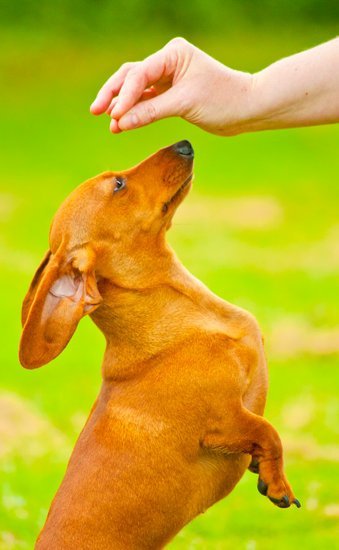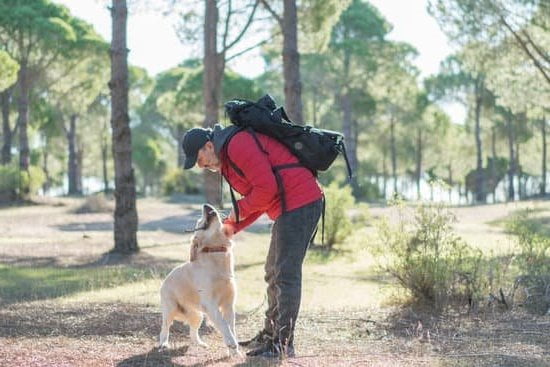House training is a crucial aspect of owning a dog, regardless of their age. However, when it comes to older dogs, the process can present its own unique set of challenges and considerations.
In this article, we will explore the question that many pet owners have: “How long does it take to house train an older dog?” By understanding the importance of house training for older dogs and learning effective techniques and strategies, you can successfully navigate this process and ensure a harmonious living environment for both you and your furry companion.
House training is not just about teaching your dog where to eliminate; it is also about establishing boundaries and fostering good behavior. For older dogs who may have developed certain habits or have never been properly trained in the past, house training becomes all the more important.
Not only does it ensure cleanliness and hygiene in your home, but it also helps reduce stress for both you and your dog by creating a structured routine and promoting a positive living environment.
The benefits of house training extend beyond just preventing accidents. A well-house-trained older dog is likely to be more relaxed, confident, and happier overall. It can also help strengthen the bond between you and your four-legged friend as you both navigate through the training process together.
With patience, persistence, and guidance, you can transform your older dog into a well-behaved member of the family who understands boundaries and respects your home. So let’s dive into understanding the challenges that come with house training an older dog and discover effective strategies for success.
Understanding the Challenges of House Training an Older Dog
As much as house training is essential for younger dogs, it can pose unique challenges when it comes to older dogs. In this section, we will delve into the reasons why house training can be more challenging for older dogs and identify common obstacles and behaviors that may hinder the training process.
Physical Limitations
One of the primary challenges in house training an older dog is their physical limitations. Older dogs may experience a decline in mobility or suffer from health conditions that affect their ability to control their bladder and bowel movements.
Arthritis, muscle weakness, or even cognitive decline can make it difficult for them to get outside in time or hold their elimination until they reach an appropriate spot. It’s crucial to be understanding of these limitations and adapt the training approach accordingly.
Previous Habits and Routines
Another challenge in house training older dogs lies in their established habits and routines. If a dog has spent a significant portion of its life without proper house training, they may have developed undesirable behaviors or relied on indoor spaces as their elimination area.
Breaking these habits can be more challenging compared to teaching a young puppy who hasn’t formed set patterns yet. Patience and consistency are key when helping an older dog unlearn old habits and adopt new ones.
Medical Factors
Certain medical factors can also contribute to house training challenges in older dogs. Urinary tract infections, gastrointestinal issues, or hormonal imbalances might cause frequent accidents despite your efforts at consistent training. It is important to consult with a veterinarian if you suspect any underlying medical issues that could be affecting your dog’s ability to be successfully house trained.
By recognizing and understanding these challenges unique to older dogs, you’ll be better equipped to navigate through the house training process with patience, empathy, and tailored strategies that cater to the individual needs of your furry companion.
Assessing the Individual Needs of Your Older Dog
When it comes to house training an older dog, it is important to assess your dog’s individual needs and limitations. Each dog is unique and may require a different approach when it comes to training. By understanding your dog’s specific requirements, you can tailor your training methods to ensure success.
Understanding Your Dog’s Specific Requirements
The first step in assessing the individual needs of your older dog is to understand their specific requirements. Take into consideration factors such as their age, health conditions, and previous experiences. Older dogs may have physical limitations that can affect their ability to hold their bladder or control their bowels. They may also have a history of trauma or neglect, which can impact their trust and willingness to engage in training.
It is essential to observe your dog’s behaviors and habits closely. Look for signs that indicate when they need to eliminate, such as pacing, sniffing around, or going towards the door. Understanding these cues will help you anticipate their needs and prevent accidents before they happen.
Determining the Appropriate Training Approach
Once you have a good grasp of your older dog’s individual needs, you can determine the appropriate training approach. Some older dogs may benefit from a more gentle and patient approach due to physical ailments or anxiety issues. Others may respond better to a structured routine with clear expectations.
Consider the characteristics of your dog’s breed as well. Certain breeds may require more time and consistency in training due to inherent traits or tendencies. For example, some terrier breeds are known for being stubborn or independent, which may necessitate additional patience and persistence during the training process.
Additionally, take into account any medical conditions that could affect your dog’s ability to be fully house trained. Consult with your veterinarian if you suspect there may be underlying health issues contributing to accidents or difficulty with training.
By understanding and accommodating your older dog’s individual needs, you can create a customized training plan that sets them up for success. Remember, patience and empathy are key when working with an older dog, and by tailoring your approach to their specific requirements, you can make the training process more effective and enjoyable for both you and your furry companion.
Establishing a Consistent Routine
Having a consistent routine is crucial when it comes to house training an older dog. A structured and predictable schedule helps your dog understand what is expected of them and makes the training process much more efficient. This section will discuss the significance of a consistent routine in house training an older dog and provide a step-by-step guide on creating and implementing one.
Why is a Consistent Routine Important?
A consistent routine provides stability and clarity for your older dog, reducing confusion and anxiety during the house training process. Dogs thrive on routine, as it gives them a sense of security and control over their environment. By establishing a consistent routine, you are setting clear expectations for your dog and teaching them when and where to eliminate.
Not only does a consistent routine benefit the dog, but it also benefits you as the owner. Knowing when your dog needs to go outside eliminates any guesswork or accidents inside the house. It also allows you to plan your day accordingly, ensuring that you have designated times for potty breaks.
Creating a Consistent Routine
- Set regular feeding times: Feed your older dog at the same times every day, which will help regulate their bathroom schedule.
- Designated potty breaks: Take your dog outside first thing in the morning, after meals, before bedtime, and at regular intervals throughout the day.
- Use cues: Use verbal or physical cues to let your dog know when it’s time to eliminate. For example, saying “potty” or using a specific hand gesture can help signal to your dog what they should do.
- Stay consistent with location: Take your older dog to the same spot every time they need to eliminate outside. The familiar scent will help stimulate the urge to go.
- 5.Don’t rush: Give your older dog enough time outside during potty breaks so they have ample opportunity to eliminate completely.
Implementing these steps consistently will help establish a routine that your older dog can rely on and facilitate the house training process. Remember to be patient and consistent, as it may take some time for your dog to adjust to the new routine. With perseverance and dedication, you will see progress in no time.
| Benefits of a Consistent Routine | Steps to Establish a Consistent Routine |
|---|---|
| – Provides stability and clarity for your older dog | – Set regular feeding times |
| – Reduces confusion and anxiety during training | – Designated potty breaks |
| – Helps regulate bathroom schedule | – Use cues to signal elimination |
| – Eliminates guesswork for the owner | – Stay consistent with location |
Reinforcing Positive Behavior
When it comes to house training an older dog, one effective tool in your training arsenal is the power of rewards. Just like humans, dogs respond well to positive reinforcement, and using rewards can greatly enhance the training process. In this section, we will explore the effectiveness of positive reinforcement in training older dogs and provide suggestions on selecting and utilizing appropriate rewards for house training.
Positive reinforcement involves rewarding your dog when they exhibit desired behaviors. This method is based on the concept that dogs are more likely to repeat behaviors that are followed by something pleasant. By using rewards such as treats, praise, or playtime, you can reinforce good behavior and make house training a positive experience for your older dog.
When selecting rewards for house training, it is important to choose items or activities that truly motivate your dog. Some common options include small food treats (such as pieces of cooked chicken or commercial dog treats), verbal praise and petting, or a favorite toy or game. It may take some trial and error to determine what truly motivates your dog, so be patient in finding the right reward that will keep them engaged and motivated during the training process.
During house training sessions, make sure to deliver the reward immediately after your dog exhibits the desired behavior. This helps establish a clear connection between their action and the reward they receive.
For example, if you are teaching your older dog to eliminate outside instead of indoors, reward them with a treat and verbal praise immediately after they finish eliminating outdoors. With time and consistent reinforcement, your dog will begin associating going outside with receiving a reward, making them more inclined to repeat this behavior in the future.
In addition to tangible rewards, remember that positive reinforcement also includes showering your older dog with attention and affection whenever they show progress in their house training journey. Giving them gentle pats or verbal praise throughout the day when they display appropriate behaviors can help strengthen the bond between you and your dog, further encouraging them to continue their training efforts.
By utilizing the power of rewards and positive reinforcement, you can make the house training process enjoyable and effective for your older dog. Remember to be patient, consistent, and understanding as you work with your dog, as each one has their own unique learning style and pace. With time, effort, and a little positivity, both you and your older dog will reap the benefits of successful house training.
Patience and Persistence
House training an older dog can sometimes be a challenging process, as they may have established certain habits and behaviors that are difficult to change. However, with patience, persistence, and the right approach, it is possible to overcome setbacks and challenges along the way.
One of the most important things to remember when house training an older dog is to remain patient. Dogs may not grasp the concept immediately, and accidents are bound to happen during the training process. It’s essential to avoid getting frustrated or angry with your dog when accidents occur, as this can undermine their progress and create an environment of fear or anxiety. Instead, focus on positive reinforcement and redirecting their behavior towards appropriate bathroom areas.
Persistence is another key factor in successfully house training an older dog. Consistency in training methods and expectations will help establish new habits more effectively. This means sticking to a routine schedule for feeding, walking, and bathroom breaks. When setbacks happen, it’s important not to get discouraged but rather continue reinforcing good behavior and redirecting any undesired actions.
Documentation can be beneficial for tracking progress during the house training journey. Keeping a record of when accidents occur or successful bathroom breaks happen can help identify patterns or triggers that might impede progress. Additionally, documenting these milestones allows you to celebrate achievements along the way and boost motivation both for yourself and your furry companion.
| Common Setbacks | Solutions |
|---|---|
| Accidents inside the house | Clean up accidents promptly with an enzymatic cleaner to remove odors. Review your routine and reinforce consistent bathroom breaks. |
| Marking territory indoors | Ensure that your dog’s environment is free from anxiety triggers. Consider using belly bands or consulting a veterinarian for potential medical issues causing marking behavior. |
| Resistance to potty training | Evaluate the training methods and adjust them if necessary. Seek professional help if you encounter persistent resistance. |
Remember, every dog is unique, and some may require more time and effort to successfully house train than others. Be patient, stay persistent, and celebrate the small victories along the way. With time and consistent training, your older dog will develop the appropriate habits and behaviors needed for successful house training.
Seeking Professional Help
House training an older dog can be a challenging process, especially if you encounter difficulties along the way. While many owners are able to successfully train their dogs on their own, there are situations where seeking professional help from a trainer or veterinarian may be necessary. This section will explore the indications that professional assistance may be required during the house training process and provide information on finding a reputable trainer or veterinarian experienced in dealing with older dogs.
There are several signs that indicate it may be time to consult a professional for help with house training your older dog. If you have been consistently following a training routine for several weeks and your dog is still having accidents inside the house, it may be beneficial to seek guidance from an expert.
Additionally, if your dog displays unusual behaviors or exhibits signs of anxiety or fear during the training process, consulting a professional can help address these issues in a safe and effective manner.
When looking for a trainer or veterinarian to assist with house training, it is important to find someone who has experience working specifically with older dogs. They should have knowledge of the unique challenges that come with house training older dogs and understand how to address them effectively. Ask for recommendations from friends, family, or your local animal shelter. You can also search online directories or contact professional organizations like the Association of Professional Dog Trainers (APDT) for referrals.
Remember, seeking professional help does not mean you have failed as an owner or trainer. It simply means that you recognize the importance of getting the best support possible for your older dog’s specific needs. With the assistance of an experienced trainer or veterinarian, you can overcome any obstacles and ensure that your dog successfully learns proper bathroom habits within your home environment.
Tracking Progress and Celebrating Success
As you embark on the journey of house training your older dog, it’s important to track their progress and celebrate their successes along the way. By doing so, you can stay motivated and provide positive reinforcement for your furry friend. Here are some tips to help you with tracking progress and celebrating success in house training your older dog:
Keep a journal or record
Keeping a journal or record of your dog’s progress can be incredibly helpful in understanding their behaviors and patterns. Note down when they have successful potty breaks and any accidents that occur. This will allow you to identify any trends or areas where more training may be needed.
Use a rewards system
Implementing a rewards system is a great way to celebrate your dog’s successes during the house training process. Whenever your dog successfully goes potty outside or uses their designated area indoors, reward them with praise, treats, or toys. This positive reinforcement not only reinforces good behavior but also motivates your dog to continue making progress.
Set milestones
Breaking down the house training process into smaller milestones can make it feel more achievable and give you something specific to celebrate. For example, when your dog consistently goes potty outside for a week without accidents, celebrate this milestone by giving them extra special rewards or planning a fun outing together.
Don’t forget verbal praise
Verbal praise is an essential form of celebration that should not be overlooked. Dogs thrive on positive feedback from their owners, so be sure to use encouraging words like “good boy” or “good girl” when they successfully go potty in the appropriate area.
Remember that house training an older dog takes time and patience, so it’s important to recognize even small victories along the way. Celebrating each success will keep you motivated and encourage your dog to continue progressing. By tracking progress and celebrating success, you can turn the house training process into a positive and rewarding experience for both you and your furry friend.
Final Thoughts
House training an older dog can be a challenging process, but with patience and consistency, it is definitely achievable. However, one common question that many dog owners have is: how long does it actually take to house train an older dog? The answer to this question can vary depending on several factors.
Firstly, it is important to recognize that every dog is unique and will progress at their own pace. Some older dogs may already have a foundation in house training, while others may have never been properly trained before. Additionally, the length of time it takes to house train an older dog can also depend on their individual temperament, past experiences, and health conditions.
Generally speaking, it is realistic to expect a significant improvement in your dog’s house training within a few weeks of consistent training and reinforcement. However, complete mastery of house training may take anywhere from several weeks to several months for an older dog.
Consistency is key when it comes to house training an older dog. It is crucial to establish and stick to a consistent routine in order to reinforce the desired behavior. Take your dog outside frequently and reward them when they eliminate in the appropriate spot. Be patient with accidents that may occur along the way and use them as learning opportunities for both you and your dog.
Remember, each dog will progress at their own pace during the house training process. It’s important not to become discouraged or frustrated if there are setbacks or slower progress than anticipated. Stay positive, persistent, and patient with your older dog throughout their journey towards becoming fully house trained. With time and dedication, you can successfully train your older dog to become a well-behaved member of your household.
Conclusion
In conclusion, house training an older dog is a necessary and worthwhile endeavor. The benefits of house training extend beyond just a clean home; it also fosters a strong bond between the dog and owner and promotes positive behavior. While it can be challenging to house train an older dog, understanding their individual needs and establishing a consistent routine are key steps in achieving success.
Assessing your older dog’s specific requirements and limitations is crucial in determining the most effective training approach. By considering factors such as their health, age, and previous experiences, you can tailor your training methods to suit their needs. Additionally, creating and implementing a consistent schedule will provide structure and clarity for your dog during the house training process.
Reinforcement through rewards is another powerful tool in training older dogs. Using positive reinforcement not only increases motivation but also teaches your dog that good behavior is rewarded. Selecting appropriate rewards that are meaningful to your dog, such as treats or praise, will help reinforce positive behaviors during the house training journey.
It’s important to remember that setbacks and accidents are normal during the house training process. Patience and persistence are crucial in overcoming these challenges. By staying motivated and committed to the training, you can work through setbacks and continue making progress with your older dog.
If necessary, don’t hesitate to seek professional help from a trainer or veterinarian experienced in dealing with older dogs. They can provide valuable guidance and support throughout the house training journey.
Lastly, keep track of your progress and celebrate each achievement along the way. Monitoring your dog’s development will allow you to see how far they’ve come in their house training journey, boosting motivation for both you and your furry friend.
Frequently Asked Questions
Is it harder to house train an older dog?
House training an older dog can potentially be more challenging compared to training a young puppy. Older dogs may have already developed certain habits, whether positive or negative, which could make it harder for them to adjust to the new house training routine.
Additionally, they may have physical limitations, such as reduced bladder control or mobility issues, which can affect their ability to hold themselves and go outside in a timely manner. However, it is important to remember that every dog is unique, and with patience, consistency, and positive reinforcement techniques, even an older dog can be successfully house trained.
At what age is it too late to house train a dog?
It is never too late to house train a dog. While it may take longer and require extra effort with older dogs compared to puppies, they can still learn appropriate bathroom habits at any age. The key lies in understanding the individual dog’s needs and abilities.
Some adult dogs may have never received proper training before but are still capable of learning new behaviors. It’s important to approach the process with patience, consistency, and positive reinforcement regardless of the dog’s age.
How long until a dog is fully house trained?
The length of time required for a dog to become fully house trained can vary widely depending on factors such as the individual dog’s temperament, previous training experiences (if any), consistency in training methods applied by the owner, and overall dedication to the process. Typically, it takes several weeks or even a few months of consistent effort before most dogs develop reliable bathroom habits indoors.
However, some dogs may pick up on the desired behavior more quickly while others might require additional time and reinforcement before consistently eliminating outdoors rather than inside the home. Regular walks outside after meals or waking up from sleep can help establish a routine that encourages successful house training over time

Welcome to the blog! I am a professional dog trainer and have been working with dogs for many years. In this blog, I will be discussing various topics related to dog training, including tips, tricks, and advice. I hope you find this information helpful and informative. Thanks for reading!





